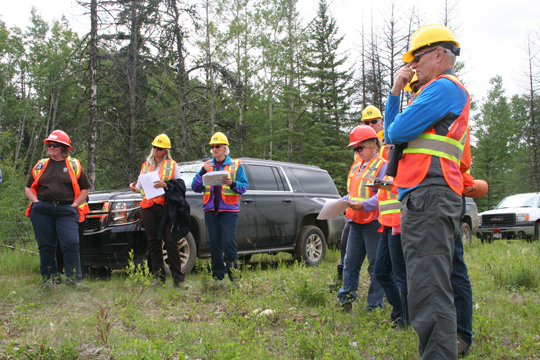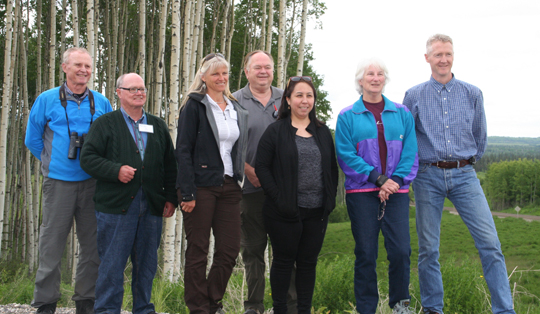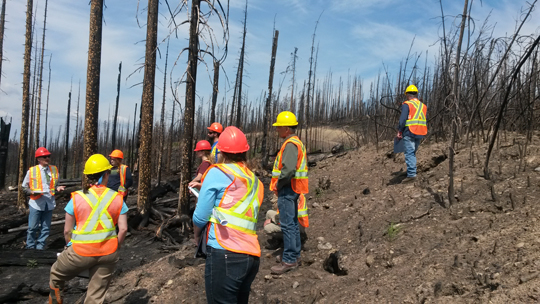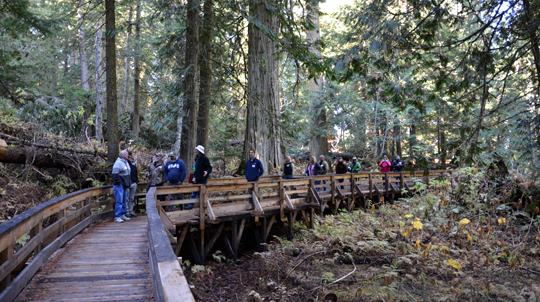Engaging Stakeholders
Canfor and Canfor Pulp work with a wide range of stakeholders. There is significant public involvement in the development of our Sustainable Forest Management Plans and we offer opportunities for public input into our forest management activities.
Our proprietary Creating Opportunities for Public Involvement (COPI) database tracks communications, actions and issues with stakeholders and other interested parties. It provides both a record of stakeholder contact information and a repository for communications, and can be used to send out information and generate reports. The database includes spatial information that identifies areas of geographic interest and links to overlapping tenure holders such as guide outfitters, trappers and mineral tenure holders.
We rely on staff knowledge, Public Advisory Groups associated with our forest certification program commitments, newspaper advertisements, open houses and presentations to local government, associations or interest groups to develop our list of stakeholders. Staff in all locations meet with local and regional interests and with other forest users so we can be sure their needs and concerns are considered when we are drawing up our management plans. One example is Houston where our staff mail harvest plans for the next season to stakeholders, and invite input and concerns about future planned blocks.
Canfor North Division staff arranged field trips during the summer of 2015 so interested members of the public in Fort Nelson, Fort St. John and Chetwynd could view and discuss our forest management practices related to climate change adaptation and wildfire timber salvage. Fort St. John staff also held a tour of our field operations for members of BC’s independent Forest Practices Board.

Canfor’s Dawn Griffin addresses participants during a public tour in the Fort St John area.

Fort St. John staff tour Canfor operations with the Forest Practices Board.

Canfor employee Darrell Regimbald speaking about forest fire salvage at a field tour in the Chetwynd area.
Our Prince George public advisory group held 10 educations outreach sessions in 2014-15, which were attended by a total of close to 500 people. A day-long field trip in October included information about Forests for Tomorrow, the spruce bark beetle outbreak and harvesting in the 1970s/80s, an interpretative trail and the timber supply review process.

In the summer and fall of 2015, Kootenay staff led several field trips with local First Nations, stakeholders, general public and the local environmental non-government organizations to discuss forest management practices and Canfor’s sustainable forest management practices. Our Radium division invited stakeholders on a field trip to look at fire interface harvesting and green tree retention levels in recently harvested blocks.
Our staff are involved in other planning processes in our operating areas. In the Mackenzie area, this included a landscape objective working group, a northern caribou recovery implementation group, a mountain goat management team, a pine stem rust working group, silviculture strategy development, ungulate winter range development and the Mid-term Timber Supply Working Group.
Canfor Pulp has been active in airshed management since we built our first mills in Prince George in the 1960s, and recently invested $180 million in three significant air quality improvements and they are delivering real, measurable results. Forest research centre FPInnovations worked with us to monitor the city’s air quality before and after the mill upgrades, and found a significant drop in the percentage of time odour is detectable.
Canfor Pulp participated in the World Wildlife Fund’s Environmental Paper Company Index 2015 to increase our transparency and better understand our opportunities for improving our sustainability performance.
Since 2009, our Prince George woodlands division has supported the Tabor Mountain Recreation Society, an umbrella group representing more than eight outdoor recreation groups, which has established a network of recreation trails (407 kilometres) and 27 staging areas east of the city. In 2015, 25 of our field operations staff collected data on 123 kilometres of trail at the request of the society.